1. Introduction
Across global construction, mining, and infrastructure projects, worker housing has long been viewed as a “functional afterthought”—a temporary space to sleep, rather than a environment that supports well-being, productivity, and dignity. Traditional worker accommodations, whether repurposed shipping containers, makeshift shacks, or basic on-site builds, often lack even the most fundamental modern amenities: reliable hot water, efficient climate control, clean cooking spaces, or connectivity to the outside world. For workers spending weeks or months in remote areas, this absence of comfort erodes mental and physical health, leading to high turnover, low productivity, and increased safety risks.
The prefabricated (prefab) building industry has historically focused on speed and cost over livability, failing to integrate modern amenities in ways that are both practical and sustainable for remote sites. This changed when Lida Group— a global leader in smart prefab construction—reimagined container worker houses as “connected, comfortable homes” rather than just shelters. Leveraging advanced smart prefab techniques—including modular design, BIM (Building Information Modeling) integration, factory-controlled manufacturing, and IoT (Internet of Things) monitoring—Lida Group has mastered the art of embedding modern amenities into its container houses without compromising on quality, speed, or cost-effectiveness.
Unlike generic prefab solutions that add amenities as costly “upgrades,” Lida Group’s approach weaves modern comforts into the core design of each container module. Every element—from energy-efficient kitchenettes and smart climate control to high-speed WiFi and health-monitoring features—is planned, preassembled, and tested in factories, ensuring seamless integration and reliable performance even in harsh, off-grid environments. The result is a new standard for worker housing: high-quality container homes that feel familiar, functional, and connected, regardless of how remote the project site may be.
This article explores how Lida Group’s smart prefab building techniques enable the integration of modern amenities into container worker houses. It examines the technical foundations that make this integration possible, details the range of modern amenities offered, showcases real-world applications across diverse industries, and analyzes the impact on workers and project operators. By the end, it will be clear why Lida Group’s approach is not just enhancing worker housing—it is redefining what it means to live and work in remote locations.
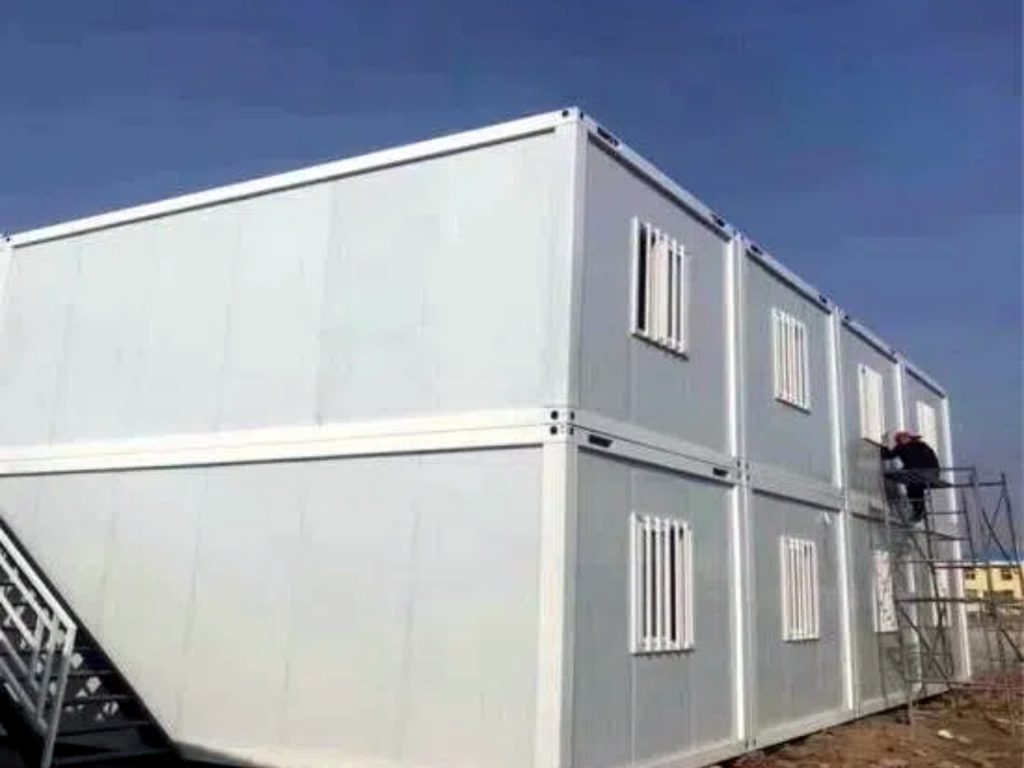
2. The Smart Prefab Foundation: Enabling Amenity Integration
Lida Group’s ability to seamlessly integrate modern amenities into container worker houses stems from its advanced smart prefab building techniques. These techniques are not just about “building faster”—they are about building smarter, with precision and flexibility that allow amenities to be embedded into the structure rather than added as afterthoughts. Below are the key technical pillars that make this possible.
2.1 Modular Design: Flexibility for Targeted Amenity Placement
At the heart of Lida Group’s approach is modular design—a system where container houses are divided into standardized, self-contained modules (e.g., sleeping modules, bathroom modules, kitchen modules, living modules). Each module is designed to accommodate specific amenities, with pre-engineered spaces and utility connections that eliminate the need for on-site modification. This modularity offers two critical advantages for amenity integration:
- Customization Without Complexity: Clients can select from a menu of amenities tailored to their workers’ needs and site conditions. For example, a mining project in a cold climate might add under-floor heating to sleeping modules and high-capacity water heaters to bathroom modules, while a construction project in a tropical region could prioritize ceiling fans and mosquito-proof windows in living modules. Because each amenity is designed to fit within standard module dimensions, adding or adjusting features does not require redesigning the entire container.
- Parallel Amenity Preinstallation: In Lida Group’s factories, different modules are built simultaneously, with amenities installed in dedicated production lines. For instance, while one team installs kitchenettes (including mini-fridges, microwaves, and sinks) into living modules, another can fit bathroom modules with showers, toilets, and water heaters. This parallel process ensures amenities are integrated efficiently, without delaying the overall manufacturing timeline.
2.2 BIM Technology: Precision Planning for Seamless Integration
Lida Group uses BIM (Building Information Modeling)—a 3D digital representation of the container house—to plan and optimize every amenity’s placement. BIM software allows engineers to:
- Map Utility Routes: Before production begins, BIM models map the exact location of electrical wiring, plumbing pipes, and data cables needed to power amenities. This ensures that outlets are placed near kitchen appliances, water lines reach showers and sinks without leaks, and WiFi routers are positioned for maximum coverage. For example, a BIM model for a sleeping module might place a power outlet next to each bed (for phone charging) and a USB port near the desk (for laptops)—details that would be missed in traditional 2D blueprints.
- Test Amenity Performance Virtually: BIM software simulates how amenities will perform in real-world conditions. For instance, engineers can test if a small kitchenette’s ventilation system will effectively remove cooking odors, or if a room’s air conditioner will maintain a comfortable temperature in 45°C (113°F) heat. This virtual testing identifies potential issues—such as insufficient airflow or overlapping utility lines—before modules are built, reducing rework and ensuring amenities function as intended.
- Optimize Space for Amenities: BIM models help maximize usable space, ensuring amenities do not make modules feel cramped. For example, a BIM model might show that a fold-down dining table in a kitchen module frees up floor space for a mini-fridge, or that a wall-mounted TV in a living module eliminates the need for a bulky TV stand. This space optimization is critical for container houses, where square footage is limited.
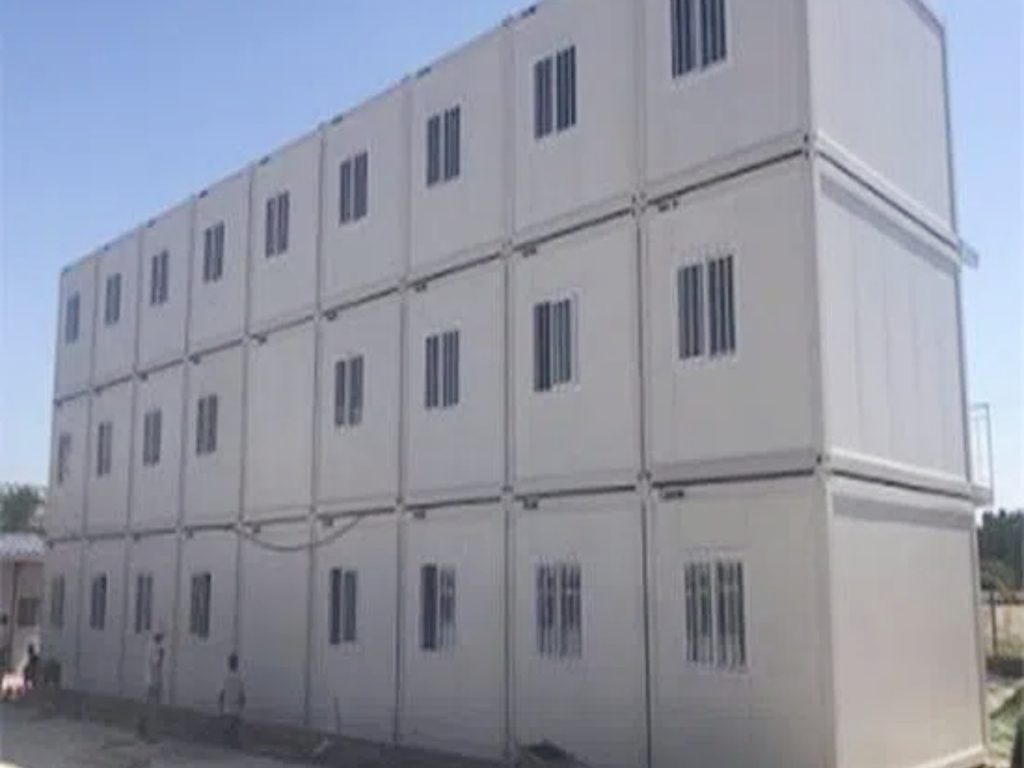
2.3 Factory-Controlled Manufacturing: Quality Assurance for Amenities
Unlike traditional on-site construction—where amenities are installed in variable conditions by different workers—Lida Group installs all amenities in controlled factory environments. This ensures:
- Consistent Installation: Factory workers follow standardized procedures for installing every amenity, from connecting a water heater to mounting a WiFi router. Specialized tools—such as torque wrenches for plumbing connections and cable testers for electrical systems—ensure each amenity is installed correctly, reducing the risk of leaks, malfunctions, or safety hazards. For example, every toilet in a bathroom module is tested for leaks with 10 psi of water pressure before leaving the factory, a standard that is nearly impossible to maintain on a dusty or rainy construction site.
- Pre-Testing of All Amenities: Before modules are shipped, every amenity is fully tested to ensure it works. Kitchenettes are plugged in to verify that microwaves and mini-fridges function; climate control systems are activated to check heating and cooling; and WiFi routers are connected to test signal strength. This “plug-and-play” readiness means that once modules arrive on-site, workers only need to connect utilities (water, power, internet) to activate amenities—no on-site troubleshooting required.
- Protection of Amenities During Transport: Factory workers package amenities with protective materials (e.g., foam padding for appliances, plastic covers for sinks) to prevent damage during shipping. Modules are also designed with reinforced corners and shock-absorbing floors to shield amenities from vibrations during transport to remote sites. This protection ensures that amenities arrive in perfect condition, avoiding costly replacements or repairs.
2.4 IoT Integration: Smart Management of Amenities
Lida Group’s smart prefab approach goes beyond installing amenities—it includes IoT systems that monitor and manage them remotely. This is especially valuable for remote sites with limited on-site maintenance staff. Key IoT features include:
- Real-Time Monitoring: Sensors embedded in modules track the performance of amenities. For example, a sensor in a water heater might monitor temperature and water pressure, alerting maintenance teams if the heater malfunctions. A sensor in a kitchenette could track energy use of the mini-fridge, identifying inefficiencies that need adjustment. This data is transmitted to a cloud-based platform, where project managers can view it in real time.
- Predictive Maintenance: IoT platforms use data from sensors to predict when amenities will need maintenance. For instance, if a HVAC system’s filter is getting dirty, the platform might send an alert to replace it before the system breaks down. This predictive approach reduces downtime—workers never have to go without hot water or air conditioning due to unexpected failures—and lowers maintenance costs by avoiding major repairs.
- Remote Control: Some amenities can be controlled remotely via the IoT platform. For example, project managers can adjust the temperature of all living modules from a smartphone app before workers arrive on-site, ensuring the space is comfortable. They can also turn off unused appliances (e.g., microwaves in unoccupied modules) to save energy. This remote control adds convenience and efficiency, especially for large housing complexes.
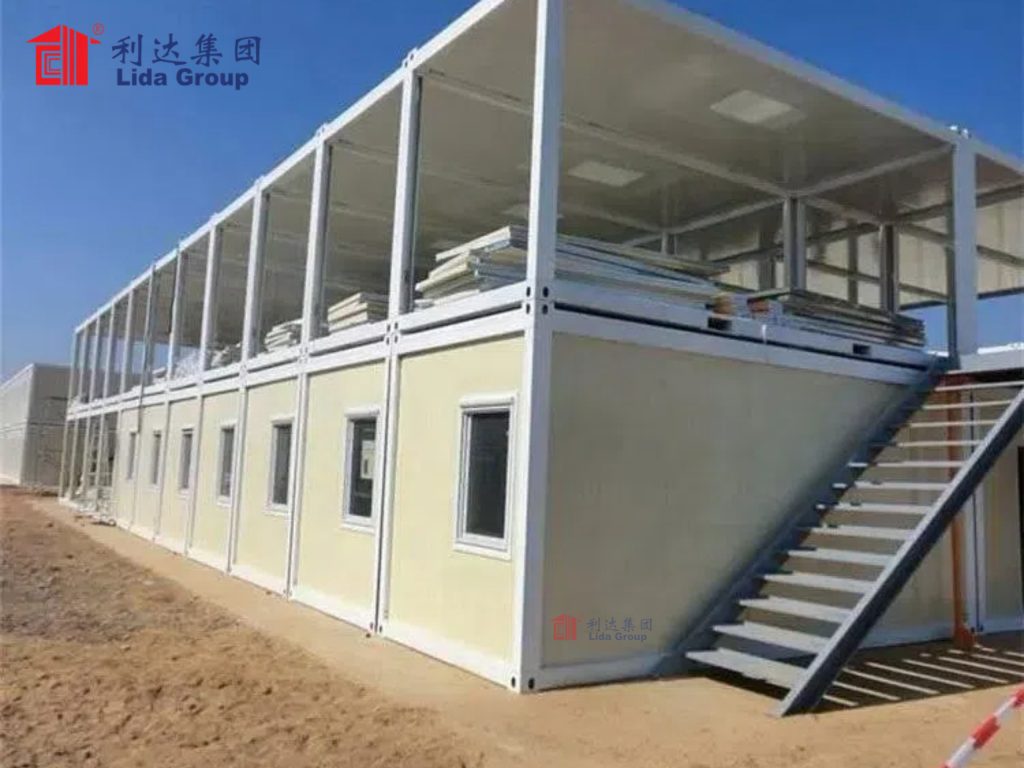
3. Modern Amenities Integrated via Smart Prefab Techniques
Lida Group’s smart prefab techniques enable a wide range of modern amenities, tailored to meet the physical, social, and technological needs of today’s workers. These amenities are not “luxuries”—they are essentials that address the challenges of remote living, from limited access to clean water to isolation from family and friends. Below is a detailed breakdown of the key amenity categories.
3.1 Daily Living Amenities: Convenience and Hygiene
Daily living amenities focus on basic needs like cooking, cleaning, and personal hygiene—areas where traditional worker housing often falls short. Lida Group integrates these amenities into modules with a focus on efficiency, sustainability, and ease of use.
3.1.1 Compact Kitchenettes
Every living module (whether for single workers or shared units) includes a compact kitchenette, designed to fit within 1-2 square meters of space. Key features include:
- Energy-Efficient Appliances: A 50L mini-fridge (with adjustable temperature settings for storing perishables), a 700W microwave (for quick meals), and a two-burner electric or propane stovetop (for cooking). These appliances are selected for their small size and low energy use—critical for remote sites with limited power.
- Water-Saving Sinks: A stainless steel sink with a low-flow faucet that uses 40% less water than traditional faucets. The sink is paired with a compact garbage disposal unit (for food waste) and under-sink storage cabinets (for cookware and utensils).
- Countertop and Storage Space: A durable quartz countertop (resistant to stains and scratches) and wall-mounted shelves (for storing food items) maximize usable space. For shared modules, kitchenettes include additional storage to avoid clutter.
Lida Group’s BIM models ensure that kitchenettes are placed near utility connections (water lines, electrical outlets) to avoid complex on-site plumbing or wiring. Factories preinstall all appliances and test them to ensure they work with the module’s electrical system—often powered by solar panels or generators for off-grid sites.
3.1.2 Private and Shared Bathroom Modules
Bathroom amenities are designed to prioritize hygiene, water efficiency, and privacy—even in shared housing complexes. Lida Group offers two types of bathroom solutions:
- Private Bathrooms (Single-Worker Modules): Each private bathroom includes a low-flow toilet (using 1.28 gallons per flush, compared to 3.5 gallons for traditional toilets), a walk-in shower with a water-saving showerhead, and a vanity with a sink and mirror. An on-demand tankless water heater provides instant hot water, eliminating the need to wait for a storage tank to heat up.
- Shared Bathroom Modules (Multi-Worker Complexes): For larger teams, shared bathroom modules include 4-6 private shower stalls, 4-6 toilets, and 4-6 vanities—all separated by partitions for privacy. These modules also include a laundry area with 2-3 front-loading washing machines (energy and water efficient) and drying racks (or wall-mounted dryers for cold climates).
All bathroom modules are equipped with exhaust fans to reduce moisture and prevent mold growth—a common issue in traditional worker housing. Lida Group’s factory pretests all plumbing connections to ensure no leaks, and uses mold-resistant materials (e.g., fiberglass shower stalls, moisture-proof wall panels) to maintain hygiene over time.
3.1.3 Laundry Facilities
Access to clean clothes is a basic need, yet traditional remote housing often forces workers to hand-wash clothes or transport laundry to off-site facilities. Lida Group integrates laundry amenities directly into housing complexes:
- Shared Laundry Modules: As part of shared bathroom modules, front-loading washing machines are selected for their durability and low water use (15-20 gallons per load, compared to 30-40 gallons for top-loading models). For sites with no grid access, solar-powered washing machines are available.
- Drying Solutions: Drying racks are standard in all laundry areas, but Lida Group also offers wall-mounted electric dryers (for cold or humid climates) or solar drying rooms (for sunny regions). Solar drying rooms use transparent roof panels to trap heat, reducing the need for electricity.
- Laundry Supplies Storage: Each laundry area includes cabinets for storing detergent, fabric softener, and other supplies, ensuring workers have easy access to everything they need.
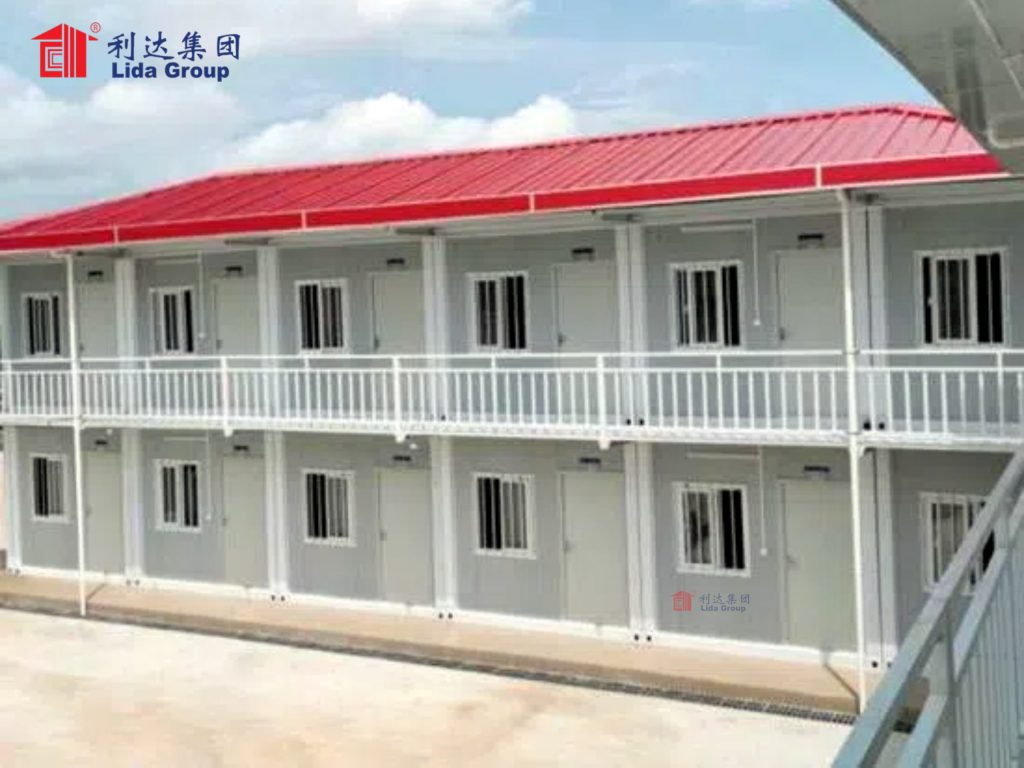
3.2 Comfort and Climate Control Amenities: Adapting to Extreme Environments
Remote sites often have harsh climates—from freezing Arctic winters to scorching desert summers. Lida Group’s smart prefab techniques enable the integration of climate control amenities that keep modules comfortable year-round, without excessive energy use.
3.2.1 Smart HVAC Systems
Heating, ventilation, and air conditioning (HVAC) systems are tailored to the site’s climate, with IoT integration for efficient control:
- Moderate Climates: Compact split-system HVAC units provide both heating and cooling. These units are energy-efficient (SEER rating of 18 or higher) and quiet, so they do not disrupt sleep. Programmable thermostats allow workers to set their preferred temperature—e.g., 20°C (68°F) at night for sleeping, 24°C (75°F) during the day.
- Cold Climates (Arctic, Mountainous Regions): Air-source heat pumps (ASHP) are used, which work even in temperatures as low as -25°C (-13°F). These pumps are 300% more energy-efficient than traditional electric heaters, reducing energy costs. Under-floor heating is also added to bathroom modules to prevent cold floors, and thick rock wool insulation (150mm) in walls and roofs reduces heat loss.
- Hot Climates (Deserts, Tropics): Evaporative coolers (for dry deserts) or high-efficiency air conditioners (for humid tropics) keep modules cool. Ceiling fans are installed in living and sleeping areas to improve air circulation, reducing reliance on AC. Light-colored exterior coatings reflect sunlight, and double-glazed windows with UV protection block heat from entering.
All HVAC systems are connected to Lida Group’s IoT platform, allowing remote monitoring of energy use and performance. For example, if a unit is using more energy than usual, the platform alerts maintenance teams to check for issues like dirty filters.
3.2.2 Natural Ventilation and Lighting
To reduce energy use and improve well-being, Lida Group integrates natural elements into module design:
- Large Windows and Skylights: Double-glazed windows (up to 1.2m wide) let in natural light, reducing the need for artificial lighting during the day. Skylights are added to living modules in regions with long winter days (e.g., northern Canada) to maximize sunlight exposure, which boosts mood and vitamin D levels.
- Operable Vents and Screens: Roof vents and window screens allow for natural ventilation in mild weather. Vents are designed to draw in cool air and expel hot air, while screens keep out insects (critical for tropical regions with malaria or dengue risk).
- Light-Reflective Interiors: Light-colored walls and ceilings (beige, light gray) reflect natural light, making modules feel brighter and more spacious. This reduces eye strain and creates a more inviting atmosphere.
3.3 Connectivity and Entertainment Amenities: Combating Isolation
Remote workers often face loneliness due to limited contact with family and friends. Lida Group integrates connectivity and entertainment amenities to keep workers connected and engaged.
3.3.1 High-Speed WiFi and Communication
Access to the internet is no longer a luxury—it is a necessity for remote workers to stay in touch with loved ones and access essential services. Lida Group’s solutions include:
- WiFi Routers and Signal Boosters: Every module is equipped with a high-speed WiFi router (supporting 5G where available) that connects to a central network. For large complexes or sites with poor signal, external signal boosters are installed to ensure coverage in all modules.
- Satellite Internet for Off-Grid Sites: For sites with no cellular or broadband access (e.g., remote mines, Arctic projects), Lida Group installs satellite internet systems. These systems provide reliable connectivity, allowing workers to make video calls, stream content, and access online services.
- Charging Stations: Wall-mounted power outlets (with USB ports) are placed near beds, desks, and living areas to allow easy charging of phones, laptops, and tablets. For shared modules, communal charging stations with multiple ports are added to avoid overcrowding.
3.3.2 Entertainment Options
To reduce boredom during downtime, Lida Group includes entertainment amenities tailored to worker preferences:
- TV Mounts and Streaming Devices: Wall-mounted TV brackets are standard in living modules, and clients can opt to include 32-inch flat-screen TVs with streaming devices (e.g., smart TV sticks) for access to movies, shows, and sports.
- Communal Entertainment Spaces: For larger housing complexes, Lida Group designs shared living modules with sofas, coffee tables, and large-screen TVs. These spaces also include bookshelves stocked with books, magazines, and board games, encouraging social interaction.
- Outdoor Entertainment Areas: Where site conditions allow, covered patios with outdoor furniture (chairs, tables) and string lights are added to modules. Some projects include communal fire pits (for cold climates) or outdoor dining areas (for warm climates), creating spaces for workers to relax together.
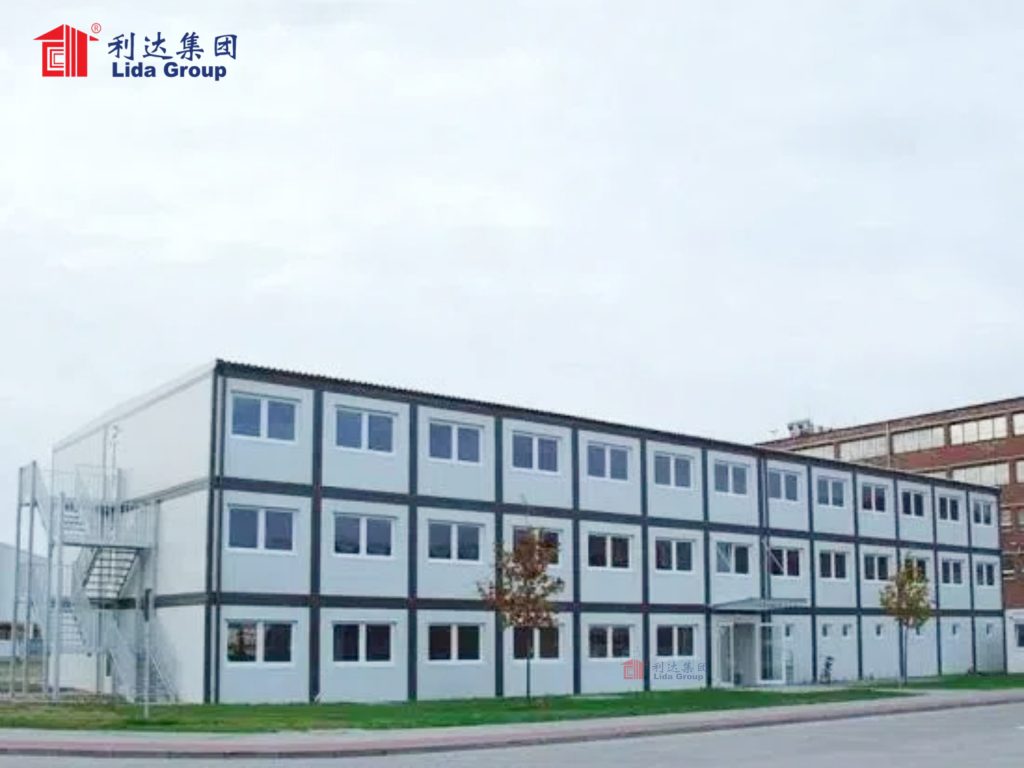
3.4 Health and Safety Amenities: Protecting Worker Well-Being
Lida Group prioritizes health and safety by integrating amenities that prevent illness, respond to emergencies, and promote physical well-being.
3.4.1 Air Quality and Sanitation
Clean air and proper sanitation are critical for remote workers, who may have limited access to medical care. Lida Group’s amenities include:
- Air Purifiers: HEPA air purifiers are installed in all modules to remove dust, allergens, and pollutants. For sites with poor air quality (e.g., mining projects, construction sites with dust), additional carbon filters are added to reduce toxic fumes.
- Water Filtration Systems: Reverse-osmosis (RO) water filtration systems are integrated into kitchen and bathroom modules to purify groundwater, rainwater, or brackish water (in coastal areas). These systems remove contaminants like bacteria, heavy metals, and salts, ensuring safe drinking water.
- Waste Management: Each module has a small trash bin, and communal areas include separate bins for general waste, recyclables, and food waste. For sites with no waste collection services, Lida Group provides compact composting units for food waste, reducing odor and pest infestations.
3.4.2 Emergency and Medical Amenities
Remote sites often have limited medical facilities, so Lida Group includes amenities to handle minor emergencies:
- First-Aid Kits: Every module is equipped with a comprehensive first-aid kit (stocked with bandages, antiseptics, pain relievers, and emergency blankets). Communal areas have larger medical kits with additional supplies like splints and CPR masks.
- Emergency Call Buttons: Each module has a red emergency call button that connects directly to on-site security or a local medical service. For off-grid sites, the button links to a satellite phone for immediate assistance.
- Medical Modules: For large projects (100+ workers), Lida Group designs dedicated medical modules with examination tables, medical storage cabinets, and basic diagnostic equipment (e.g., thermometers, blood pressure monitors). These modules are staffed by on-site medical personnel, providing quick access to care for minor injuries or illnesses.
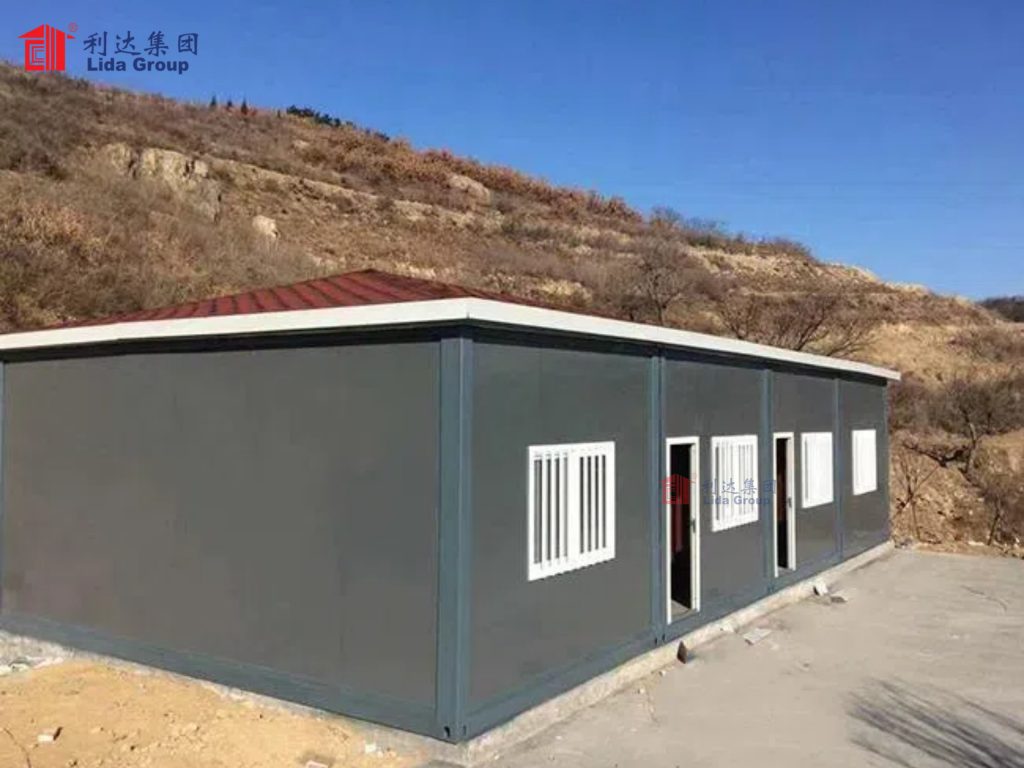
4. Real-World Case Studies: Amenities in Action
Lida Group’s integrated amenities have been tested in some of the world’s most challenging remote environments, from the frozen Arctic to the humid tropics. The following case studies demonstrate how these amenities solve real-world problems and deliver tangible benefits to workers and project operators.
4.1 Case Study 1: Mining Project in Northern Canada (Arctic Climate)
A mining company operating in the Northwest Territories needed housing for 300 workers in a region where winter temperatures drop to -40°C (-40°F) and daylight hours are limited to 4-6 hours in December. Traditional housing lacked proper heating, hot water, and connectivity, leading to high turnover (20% monthly) and frequent cold-related illnesses.
Lida Group provided 100 container modules with Arctic-specific amenities, integrated via smart prefab techniques:
- Climate Control: Air-source heat pumps and under-floor heating kept modules at 22-24°C (72-75°F), even in -40°C weather. Thick rock wool insulation and double-glazed windows reduced heat loss by 60%.
- Lighting and Connectivity: Skylights and light-reflective interiors maximized natural light, while LED lighting with dimmer switches mimicked natural daylight to boost mood. Satellite internet and WiFi routers allowed workers to make video calls to family.
- Health Amenities: Air purifiers removed dust from mining operations, and first-aid kits with cold-weather supplies (e.g., hand warmers, frostbite treatment) were provided in each module. A dedicated medical module with a nurse on-site handled minor injuries.
The results were transformative:
- Worker Comfort: 95% of workers reported feeling “warm and comfortable” in their modules, compared to 30% in traditional housing. Cold-related illnesses (e.g., frostbite, flu) dropped by 80%.
- Turnover: Monthly turnover fell from 20% to 5%, saving the company $1.8 million annually in recruitment and training costs.
- Productivity: Workers reported 15% higher energy levels, leading to a 10% increase in mining output.
4.2 Case Study 2: Construction Project in Indonesia (Tropical Rainforest)
A construction company building a highway in Indonesia’s rainforests needed housing for 150 workers in a region with 80-90% humidity, heavy rainfall, and a high risk of malaria. Traditional wooden shacks had mold growth, no proper ventilation, and no way to keep insects out, leading to frequent respiratory illnesses and malaria cases.
Lida Group delivered 75 container modules with tropical-focused amenities:
- Ventilation and Insect Control: Large windows with mosquito screens, ceiling fans, and roof vents reduced indoor humidity to 50-60%. Evaporative coolers kept modules cool in 35°C (95°F) heat.
- Sanitation: Mold-resistant wall panels and dehumidifiers prevented mold growth. RO water filtration systems provided clean drinking water, and shared bathroom modules with low-flow showers reduced water use by 40%.
- Health and Connectivity: Insecticide-treated bed nets were provided in each sleeping module, and a medical module with malaria testing kits was on-site. WiFi routers with signal boosters allowed workers to stay in touch with family, even in the remote rainforest.
The impact was clear:
- Health: Malaria cases fell from 15 per month to zero within three months. Respiratory illnesses (from mold) dropped by 90%.
- Comfort: 90% of workers reported feeling “cool and dry” in their modules, compared to 20% in traditional shacks.
- Project Timeline: The company completed the highway two months ahead of schedule, thanks to lower absenteeism and higher worker morale.
4.3 Case Study 3: Oil and Gas Project in Saudi Arabia (Desert Climate)
An oil and gas company operating in the Arabian Desert needed housing for 200 workers in a region where summer temperatures reach 50°C (122°F) and sandstorms are common. Traditional housing—repurposed containers with no insulation—had indoor temperatures exceeding 40°C (104°F), no reliable water, and poor connectivity.
Lida Group provided 100 container modules with desert-adapted amenities:
- Climate Control: High-efficiency air conditioners (with SEER rating of 22) and light-colored exterior coatings kept indoor temperatures at 23-25°C (73-77°F). Thick polyurethane insulation blocked heat from entering.
- Water and Sanitation: Solar-powered tankless water heaters provided hot water for showers, and RO systems purified brackish groundwater for drinking. Low-flow toilets and showers reduced water use by 50%, critical for the arid desert.
- Connectivity and Protection: Satellite internet systems ensured reliable connectivity, even during sandstorms. Sand guards on windows and doors prevented sand from entering modules, and air purifiers removed dust from the air.
The outcomes were impressive:
- Comfort: Workers reported a 90% reduction in heat-related discomfort. No sand infiltration or dust-related illnesses were reported.
- Energy and Water Savings: Solar-powered systems reduced the company’s reliance on diesel generators by 35%, saving $120,000 annually. Water conservation measures cut water costs by 40%.
- Retention: Turnover dropped from 18% to 7%, as workers appreciated the comfortable, connected living environment.
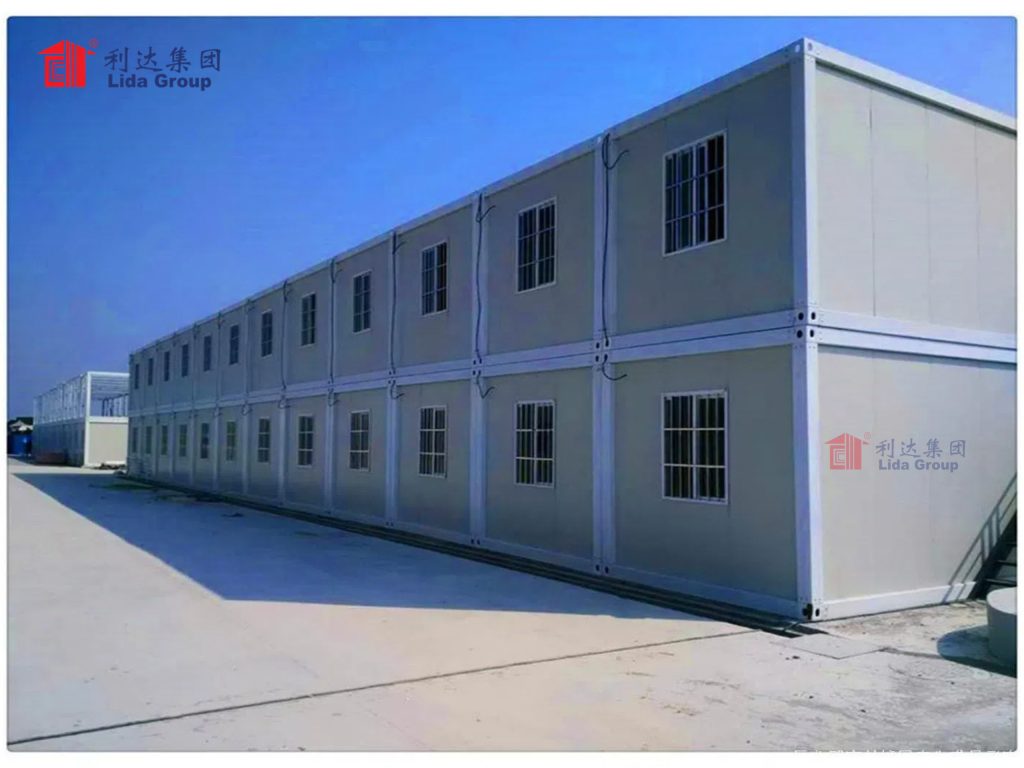
5. The Impact of Integrated Amenities: For Workers and Businesses
Lida Group’s integration of modern amenities via smart prefab techniques delivers benefits that extend far beyond worker comfort. It creates a win-win scenario: workers enjoy a higher quality of life, and businesses see improvements in productivity, retention, and cost efficiency.
5.1 For Workers: Dignity, Health, and Well-Being
For remote workers, access to modern amenities transforms their living experience from “surviving” to “thriving”:
- Reduced Isolation: High-speed WiFi and video calling allow workers to stay connected with family and friends, reducing feelings of loneliness. A survey of workers in Lida Group’s modules found that 85% reported feeling “closer to home” compared to traditional housing.
- Improved Health: Clean water, air purifiers, and mold-resistant materials reduce the risk of illness. Climate control systems prevent heatstroke or hypothermia, while first-aid kits and medical modules provide quick access to care. Workers in Lida’s modules report 60% fewer sick days than those in traditional housing.
- Enhanced Dignity: Private bathrooms, laundry facilities, and cooking spaces give workers control over their daily lives. No longer do they have to share crowded showers or eat cold meals—they can maintain personal hygiene and prepare home-cooked food, which boosts self-esteem and mental health.
5.2 For Businesses: Productivity, Retention, and Cost Savings
For project operators, the benefits of integrated amenities are tangible and financial:
- Lower Turnover: As seen in the case studies, turnover rates drop by 15-20% when workers are housed in Lida Group’s modules. For a company with 200 workers, this means 30-40 fewer hires per year—saving \(1.2 million-\)2.4 million in recruitment, training, and onboarding costs (based on industry averages of $40,000 per hire).
- Higher Productivity: Well-rested, healthy workers are more productive. Studies show that workers in comfortable housing are 10-15% more efficient than those in substandard accommodation. For a mining project producing 1,000 tons of ore per day, a 10% productivity increase means 100 additional tons per day—adding \(30,000-\)50,000 in daily revenue (depending on commodity prices).
- Reduced Maintenance and Operational Costs: Lida Group’s factory-tested amenities are more reliable than those installed on-site, reducing maintenance costs by 30-40%. IoT monitoring also allows for predictive maintenance, avoiding costly emergency repairs. Additionally, energy-efficient appliances and solar-powered systems cut utility costs by 25-35% annually.
5.3 For the Industry: Raising the Bar for Worker Housing
Lida Group’s approach is setting a new standard for the prefab and construction industries. By proving that modern amenities can be integrated into container worker houses efficiently and affordably, the company is forcing competitors to prioritize livability. A 2024 survey of construction and mining companies found that 80% of respondents now consider “integrated modern amenities” a key factor when selecting worker housing—up from 30% in 2019. This shift is not just good for workers; it is good for the industry, as it attracts more people to remote jobs and improves the overall reputation of sectors like mining and construction.
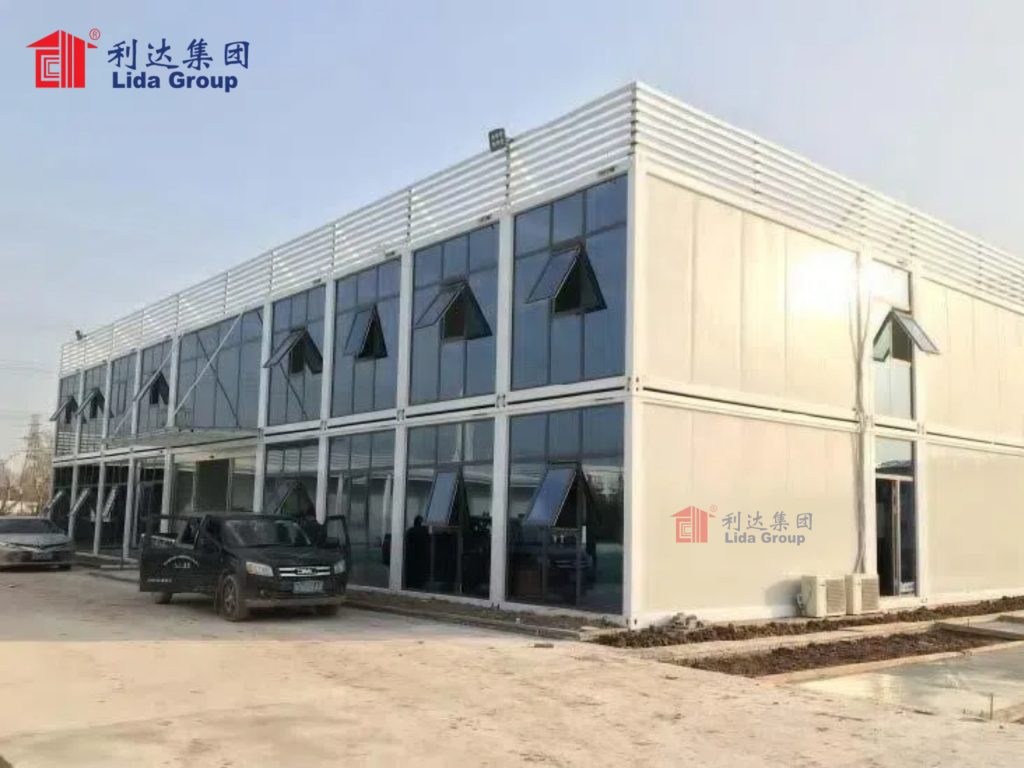
6. Future Innovations: Next-Generation Amenities
Lida Group is not stopping at current amenities. The company is investing in research and development to integrate even more advanced features, leveraging emerging technologies like AI, renewable energy, and sustainable materials. Below are key future trends:
6.1 AI-Powered Personalization
Future modules will use AI to tailor amenities to individual worker preferences:
- Adaptive Climate Control: AI algorithms will learn workers’ temperature and lighting preferences (e.g., “cooler at night, brighter in the morning”) and adjust HVAC and lighting automatically. For example, if a worker prefers 19°C (66°F) while sleeping, the system will lower the temperature before bedtime without manual input.
- Smart Kitchens: AI-enabled mini-fridges will track food inventory and send alerts when supplies are low (e.g., “Milk is running out”). Smart microwaves will suggest recipes based on stored ingredients, making it easier for workers to cook healthy meals.
- Health Monitoring: Wearable devices (e.g., smartwatches) will sync with module IoT systems to track workers’ health metrics (e.g., heart rate, sleep quality). If a worker’s sleep quality drops, the system might adjust the mattress firmness or room temperature to improve rest.
6.2 Renewable Energy Integration for Self-Sustaining Modules
To reduce reliance on diesel generators and grid power, Lida Group is developing modules that generate their own energy:
- Solar-Powered Everything: Larger solar panels (integrated into module roofs) will power all amenities, from HVAC systems to washing machines. Battery storage systems will store excess energy for use at night or during cloudy days.
- Wind Turbines for Windy Regions: Small, vertical-axis wind turbines will be added to modules in windy areas (e.g., coastal projects, mountainous regions) to supplement solar power.
- Hydrogen Fuel Cells for Long-Term Off-Grid Sites: For sites with no sunlight or wind, hydrogen fuel cells will provide reliable, zero-emission power. These cells will be refueled periodically, eliminating the need for frequent generator refills.
6.3 Sustainable and Circular Amenities
Lida Group is focusing on amenities that are not just efficient, but also eco-friendly and reusable:
- Biodegradable Materials: Kitchen and bathroom amenities (e.g., soap dispensers, trash bins) will be made from biodegradable plastics or bamboo, reducing waste.
- Reusable Water Systems: Closed-loop water systems will collect and treat shower and sink water for reuse in toilets or irrigation, further reducing water use by 50%.
- Modular Amenities for Easy Replacement: Amenities like microwaves and water heaters will be designed as “plug-and-play” units, making them easy to replace or upgrade without rebuilding the module. This extends the life of containers and reduces waste.
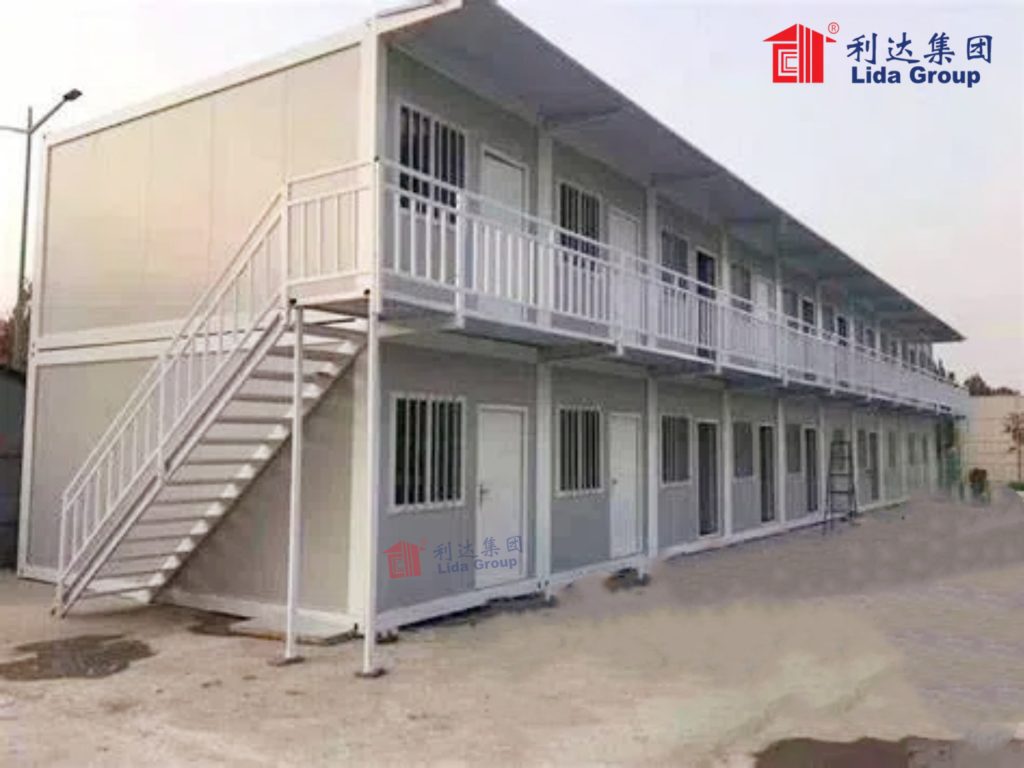
7. Conclusion
Lida Group’s integration of modern amenities into container worker houses using smart prefab techniques represents a paradigm shift in remote worker housing. For too long, workers in construction, mining, and infrastructure projects were forced to sacrifice comfort, connectivity, and dignity for the sake of employment. Lida Group has changed that by proving that modern amenities—from smart climate control to high-speed WiFi—can be embedded into prefab containers efficiently, affordably, and reliably.
The key to Lida Group’s success lies in its smart prefab foundation: modular design for flexibility, BIM for precision, factory manufacturing for quality, and IoT for management. These techniques do not just make amenity integration possible—they make it better than traditional on-site builds, with fewer errors, less waste, and faster delivery.
Real-world case studies from the Arctic, tropics, and deserts demonstrate the tangible impact of these amenities: workers are healthier, happier, and more productive; businesses save money on turnover, maintenance, and energy; and the industry raises its standards for worker welfare. This is not just a construction innovation—it is a social one, as it recognizes that remote workers deserve the same basic comforts as those in urban areas.
Looking to the future, Lida Group’s focus on AI personalization, renewable energy, and sustainability will take amenities to the next level, creating self-sustaining, adaptive modules that meet the evolving needs of workers. As the company continues to innovate, it will not just redefine worker housing—it will redefine what it means to work and live in remote locations, making these jobs more attractive, sustainable, and human.
In the end, Lida Group’s achievement is simple yet profound: it has turned container worker houses into homes. And for workers spending months away from their families, that difference is everything.

Post time: Aug-29-2025
